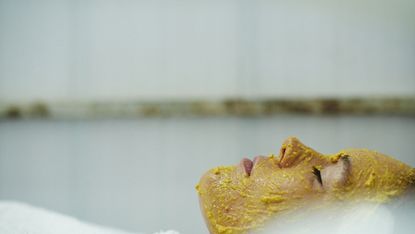
Being constantly on the road for 12 days, the girls start noticing the first signs of fatigue. Their skin and hair reflect the permanent exposure to wind, sun, and rain. This time, they leave Brasilia for a 150 km ride to Pirenópolis, a charming little town in Serra dos Pirineus known for its waterfalls. Watch a video of their journey here:
Dubbed "Piri" by its inhabitants, the town was founded in the 18th century along the mining trail developed in the center of the country. Today, Pirenopolis is a place of leisure for Brazil's inhabitants. During the weekend, they share the city with the hippie communes who have been there for several decades. Life is quiet during the week, when tourists have not yet descended, and traditional customs particular to the region are still practiced– for example, the death of a loved resident announced from a car by loudspeakers.
Beauty Secret from the Midwest
This kind of peace is exactly what Cindy, Louise B, Louise D, Pauline, and Cecile needed to combat their tired bodies and take care of themselves. They first planned to relax and go swimming in the waterfalls, but because of the rain they had to change plans…Luckily, in Brazil, there are beauty salons everywhere, even in the smallest village, and they found Ana Paula Diniz's modest (and very effective!) salon. Here, they learned about a valuable beauty secret from the Midwest: The buri—a typical local seed—that tastes like peanuts.
"The buri is considered Savannah's gold. It acts like an antioxidant on the skin, as it is rich in omega 3, 6, and 9, and becomes a great activator when mixed with vitamin C. It also fights bad cholesterol if ingested," the beautician says.

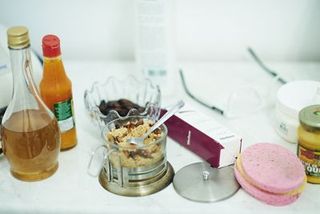
To treat the girls' skin, Ana Paula used baru flour. Mixed with the seed's own oil it is used as an exfoliator. She then applied pequi pulp and followed with a soothing mint lotion. On Pauline's oiler skin, she swapped the pequi for green clay. "Pequi is very oily, so it is not suitable for her." The beautician told the girls that the use of regional fruits as a facial mask is a habit that has been practiced for generations. "As we didn't have manufactured cosmetics, we had to use what was around." The treatment finished with a device that emits an electrical current that stimulates the skin's healing. Though any Brazilian who has had a facial would be familiar with the device, Pauline was surprised by it: "I've had facials in France before, but I had never seen this."
Best Holistic Massage Ever
Stay In The Know
Marie Claire email subscribers get intel on fashion and beauty trends, hot-off-the-press celebrity news, and more. Sign up here.
After having their hair treated too, they went to EPS Buddhi—owned by massage therapist Cristiane de Goes, 41—where they had different massages and received some precious advice. "If you are motor biking for so long, you should stretch before and after each trip. A correct posture, a balanced diet, and a minimum 8-hour sleep are also essential," says Holistic Therapist Elizabeth Senese, who massaged Cecile as she complained of leg pain. "Her sciatic nerve is inflamed, she needs some rest." Therefore, the girls decided to spend one more night in Pirenópolis so that Cecile could rest up and get back on form. Louise D was almost levitating after a session with Cristiane. "It was not only good for my body, but also for my soul. It feels like I had been to the best doctor ever."
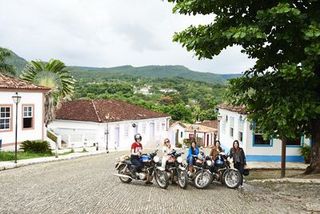
How Women Rode to Freedom (With a Few Flat Tires Along the Way)
Before the end of the day, they went to the Rodas do Tempo Museum, a must-see spot for women like them. While parking in front of the museum, they had the opportunity to meet an enthusiastic 80-year-old woman who—surprisingly enough—had a passion for motorcycles. She was so amazed by the five young women riders that she spontaneously came to them and expressed her admiration.
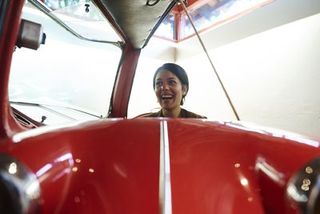
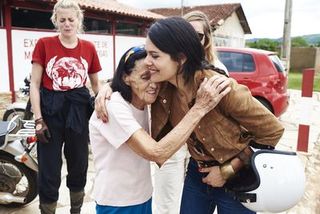
The museum comprises a historical collection of two-wheeled vehicle models, from their origins to the present time. Everything started with the invention of the bicycle, which then, with the incorporation of an engine, evolved into a motorcycle. The bicycle played a key role in women's emancipation in the 20th century. "When the bicycle was invented in the late 19th century, it enabled women to experience a social autonomy that they had never had before, as they could leave home without depending on anyone. This allowed them to, for example, socialize with other men away from their family," wrote Sue Macy, author of Wheels of Change - How Women Rode the Bicycle to Freedom the (With a Few Flat Tires Along the Way). "It also forced them to adopt more comfortable clothes, it was responsible for women's first massive involvement in physical activity (strengthening their legs and lungs), and it awoke the sense of adventure and courage that was essential for the 20th century triumphs.
And it seems the L'équipée team are the living proof of the results.
Keep following the L'équipée girls' quest to discover what beauty means around the world at the Road to Beauty.
-
 Prince William Single-Handedly Planned His and Kate Middleton’s Romantic Honeymoon
Prince William Single-Handedly Planned His and Kate Middleton’s Romantic HoneymoonKate had no idea where they were headed on their two week luxurious break from reality until after their 2011 wedding.
By Rachel Burchfield Published
-
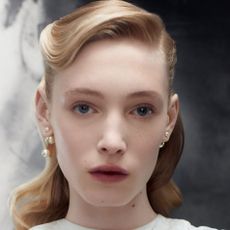 Bitten Lips Took Center Stage at Dior Fall 2024 Show
Bitten Lips Took Center Stage at Dior Fall 2024 ShowModels at the Dior Fall 2024 show paired bitten lips with bare skin, a beauty trend that will take precedence this season.
By Deena Campbell Published
-
 Princess Diana Revealed to a Royal Author the Real Reason Why Her Marriage to Prince Charles Ended Not Long Before She Died in 1997
Princess Diana Revealed to a Royal Author the Real Reason Why Her Marriage to Prince Charles Ended Not Long Before She Died in 1997And no, it apparently wasn’t Camilla Parker-Bowles.
By Rachel Burchfield Published
-
 The 32 Best Hair Growth Shampoos of 2024, According to Experts
The 32 Best Hair Growth Shampoos of 2024, According to ExpertsRapunzel hair, coming right up.
By Gabrielle Ulubay Published
-
 The 20 Best Hair Masks for Damaged Hair, According to Experts and Editors
The 20 Best Hair Masks for Damaged Hair, According to Experts and EditorsHealthy strands, here we come!
By Gabrielle Ulubay Last updated
-
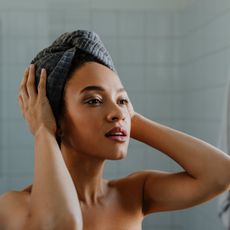 How Often You Should Wash Your Hair, According To Experts
How Often You Should Wash Your Hair, According To ExpertsKeep it fresh, my friends.
By Gabrielle Ulubay Published
-
 The 11 Best Magnetic Lashes of 2023
The 11 Best Magnetic Lashes of 2023Go ahead and kiss your messy lash glue goodbye.
By Hana Hong Published
-
 Beauty Advent Calendars Make the Perfect Holiday Gift
Beauty Advent Calendars Make the Perfect Holiday GiftThe gift that keeps on giving.
By Julia Marzovilla Last updated
-
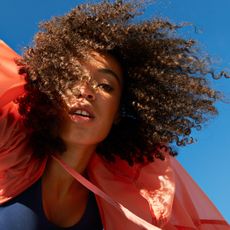 The 18 Best Natural Hair Products in 2023
The 18 Best Natural Hair Products in 2023Remember: Your curls are your crown.
By Gabrielle Ulubay Published
-
 The 9 Best Hot Rollers for the Curls of Your Dreams
The 9 Best Hot Rollers for the Curls of Your DreamsThis is how we roll.
By Samantha Holender Published
-
 The 12 Best Cream Eyeshadows, According to Makeup Artists
The 12 Best Cream Eyeshadows, According to Makeup ArtistsThe best part? They’re so easy to apply.
By Samantha Holender Published